
How to Use voltage sensor: Examples, Pinouts, and Specs
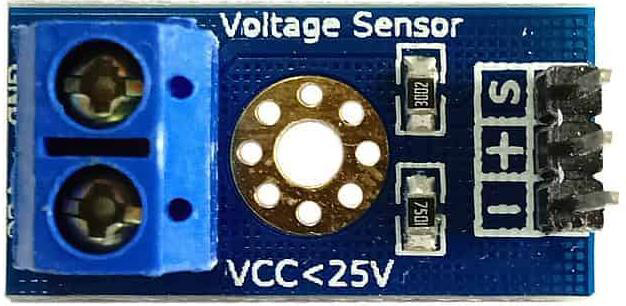
 Design with voltage sensor in Cirkit Designer
Design with voltage sensor in Cirkit DesignerIntroduction
A voltage sensor is a device that detects and measures the voltage level in a circuit, providing feedback for monitoring and control purposes. Manufactured by 2wef with the part ID 123454225435632y, this voltage sensor is designed for accurate and reliable voltage measurement in a variety of applications.
Explore Projects Built with voltage sensor
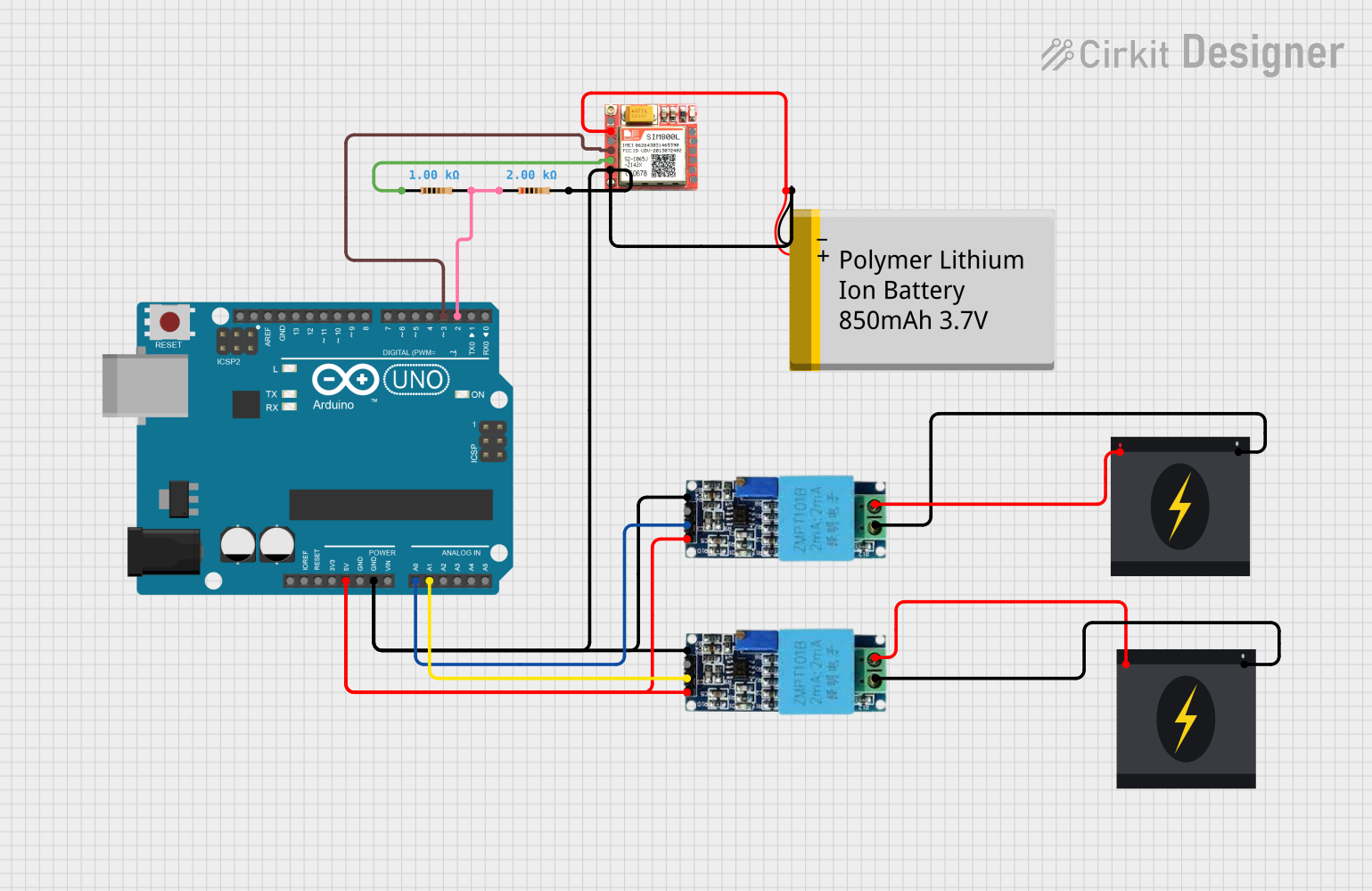
 Open Project in Cirkit Designer
Open Project in Cirkit Designer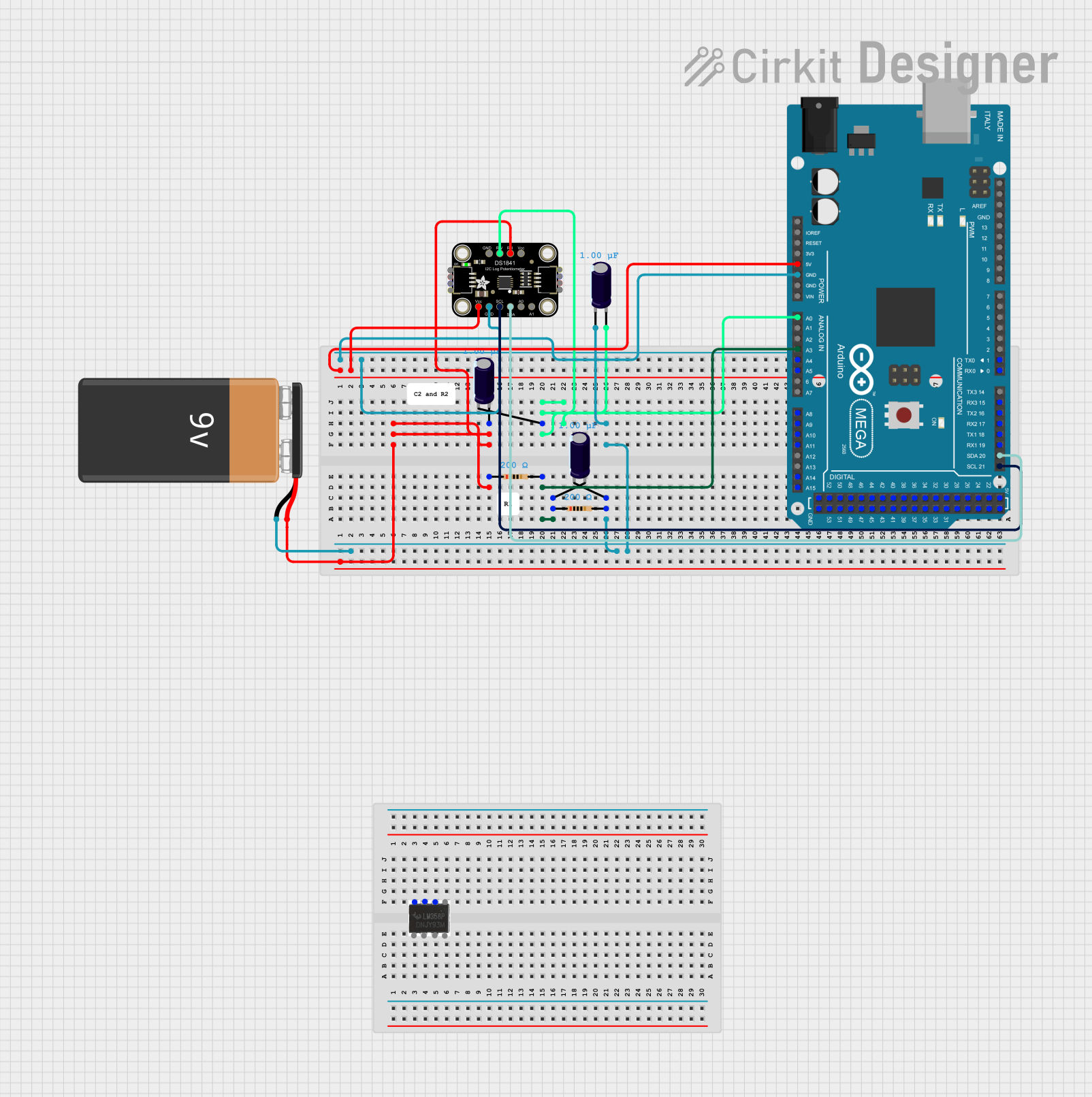
 Open Project in Cirkit Designer
Open Project in Cirkit Designer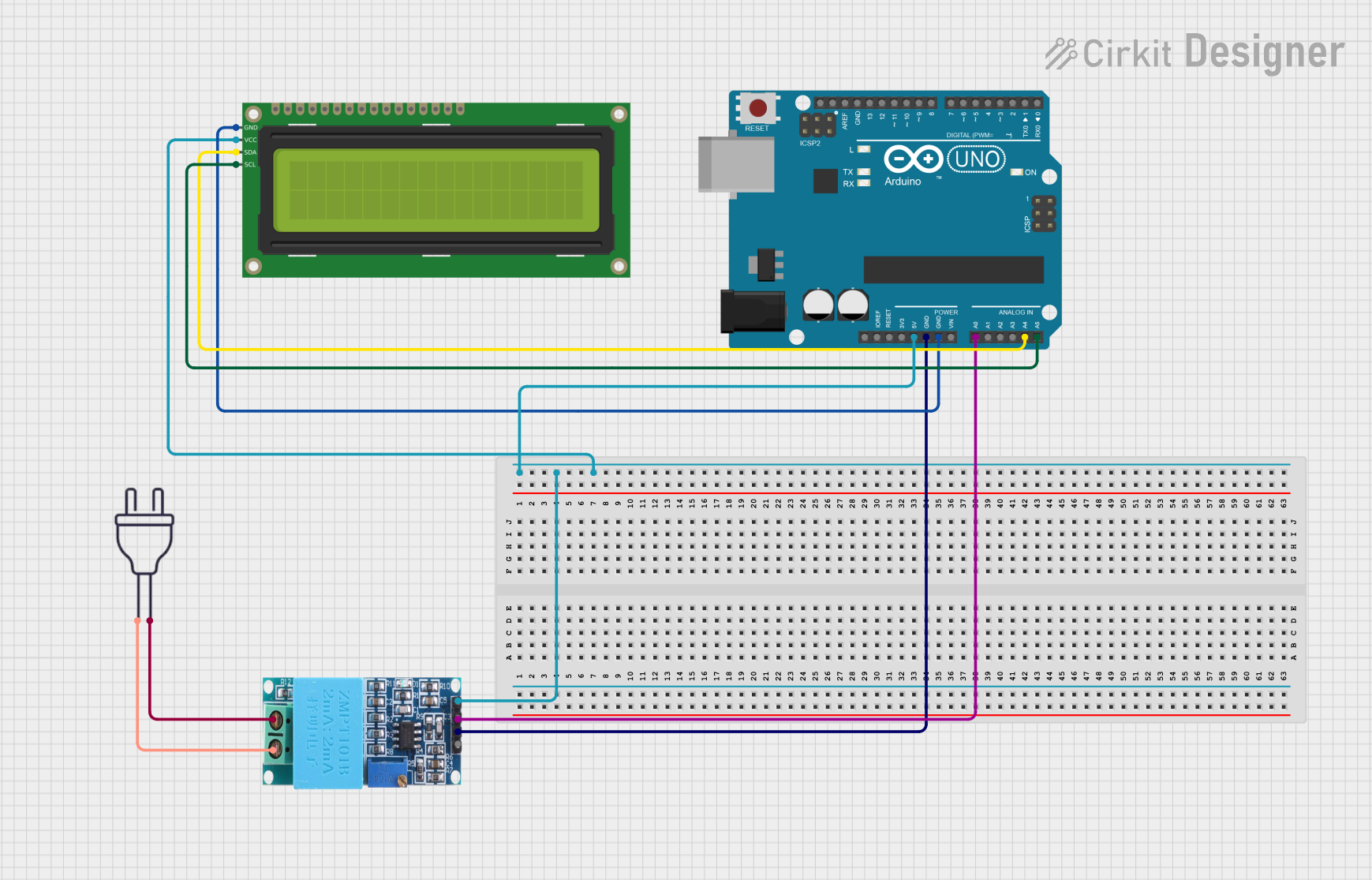
 Open Project in Cirkit Designer
Open Project in Cirkit Designer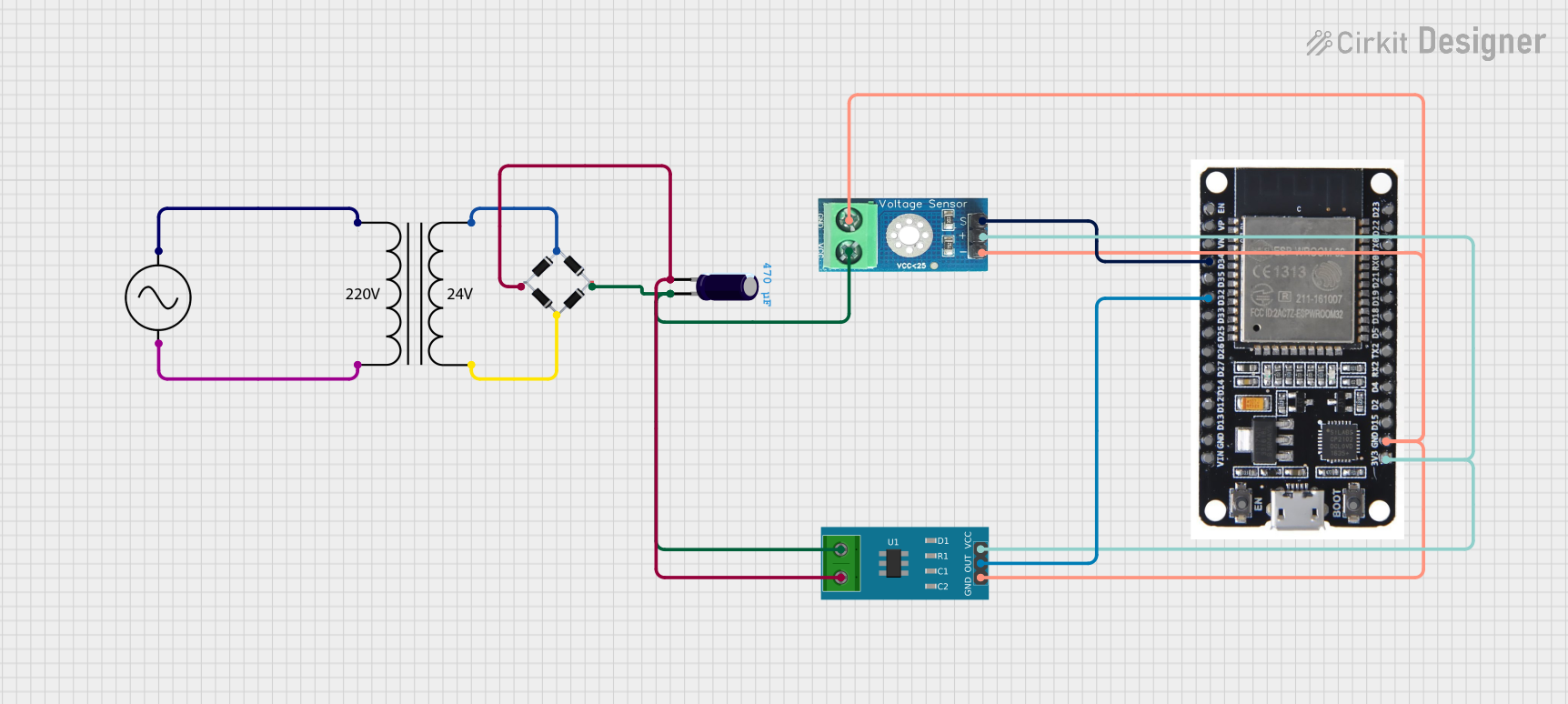
 Open Project in Cirkit Designer
Open Project in Cirkit DesignerExplore Projects Built with voltage sensor

 Open Project in Cirkit Designer
Open Project in Cirkit Designer
 Open Project in Cirkit Designer
Open Project in Cirkit Designer
 Open Project in Cirkit Designer
Open Project in Cirkit Designer
 Open Project in Cirkit Designer
Open Project in Cirkit DesignerCommon Applications and Use Cases
- Battery monitoring systems
- Power supply regulation
- Renewable energy systems (e.g., solar panels)
- Industrial automation and control
- Educational projects and prototyping with microcontrollers (e.g., Arduino)
Technical Specifications
The voltage sensor is designed to measure DC voltages and provide a scaled-down analog output for interfacing with microcontrollers or other devices.
Key Technical Details
- Input Voltage Range: 0–25V DC
- Output Voltage Range: 0–5V DC (scaled for microcontroller ADC input)
- Accuracy: ±1% (typical)
- Operating Voltage: 3.3V or 5V DC
- Current Consumption: <10mA
- Operating Temperature: -40°C to 85°C
- Dimensions: 30mm x 20mm x 10mm
Pin Configuration and Descriptions
The voltage sensor typically has a 3-pin interface for easy connection to a microcontroller or other devices. The pinout is as follows:
| Pin Number | Pin Name | Description |
|---|---|---|
| 1 | VCC | Power supply input (3.3V or 5V DC) |
| 2 | GND | Ground connection |
| 3 | OUT | Analog voltage output (0–5V DC) |
Usage Instructions
How to Use the Voltage Sensor in a Circuit
- Power the Sensor: Connect the VCC pin to a 3.3V or 5V DC power source and the GND pin to the ground of your circuit.
- Connect the Output: Attach the OUT pin to the analog input pin of your microcontroller (e.g., Arduino).
- Voltage Measurement: The sensor outputs a scaled-down voltage proportional to the input voltage. For example, if the input voltage is 25V, the output voltage will be 5V.
Important Considerations and Best Practices
- Voltage Divider: The sensor uses an internal voltage divider to scale down the input voltage. Ensure the input voltage does not exceed the sensor's maximum rating (25V DC).
- Calibration: For precise measurements, calibrate the sensor by comparing its output with a known reference voltage.
- Noise Reduction: Use decoupling capacitors near the sensor to minimize noise in the output signal.
- Microcontroller Compatibility: Ensure the microcontroller's ADC reference voltage matches the sensor's output range (e.g., 5V for Arduino UNO).
Example Code for Arduino UNO
Below is an example code snippet to read the voltage sensor's output using an Arduino UNO:
// Define the analog pin connected to the sensor's OUT pin
const int sensorPin = A0;
// Define the maximum input voltage of the sensor (25V in this case)
const float maxInputVoltage = 25.0;
// Define the maximum output voltage of the sensor (5V)
const float maxOutputVoltage = 5.0;
void setup() {
Serial.begin(9600); // Initialize serial communication at 9600 baud
}
void loop() {
// Read the analog value from the sensor
int sensorValue = analogRead(sensorPin);
// Convert the analog value to a voltage (0-5V range)
float outputVoltage = (sensorValue / 1023.0) * maxOutputVoltage;
// Scale the output voltage to the input voltage range (0-25V)
float inputVoltage = (outputVoltage / maxOutputVoltage) * maxInputVoltage;
// Print the measured input voltage to the Serial Monitor
Serial.print("Input Voltage: ");
Serial.print(inputVoltage);
Serial.println(" V");
delay(1000); // Wait for 1 second before the next reading
}
Troubleshooting and FAQs
Common Issues and Solutions
No Output Voltage:
- Cause: Incorrect wiring or no power supply.
- Solution: Verify all connections and ensure the sensor is powered correctly.
Inaccurate Voltage Readings:
- Cause: Lack of calibration or noise in the circuit.
- Solution: Calibrate the sensor using a reference voltage and add decoupling capacitors.
Microcontroller Not Detecting Output:
- Cause: Incorrect analog pin configuration or damaged sensor.
- Solution: Check the microcontroller's pin configuration and test the sensor with a multimeter.
FAQs
Q: Can this sensor measure AC voltage?
- A: No, this sensor is designed for DC voltage measurement only.
Q: What happens if the input voltage exceeds 25V?
- A: Exceeding the maximum input voltage may damage the sensor. Use a higher-rated voltage divider if needed.
Q: Is this sensor compatible with 3.3V microcontrollers?
- A: Yes, the sensor works with both 3.3V and 5V systems, but ensure the output voltage does not exceed the ADC reference voltage of your microcontroller.
This documentation provides all the necessary details to effectively use the 2wef 123454225435632y Voltage Sensor in your projects.